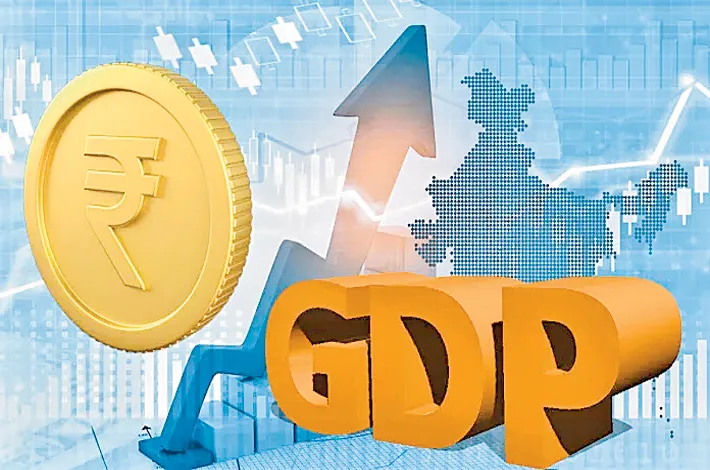India Achieves 8.2% GDP Growth in 2024 amid Global Challenges
10-01-2025 12:00:00 AM

metro india news I hyderabad
India's economy witnessed a pivotal year in 2024, achieving an impressive GDP growth rate of 8.2% despite global economic uncertainties. Real GDP has been estimated to grow by 6.4% in FY 2024-25 as compared to the growth rate of 8.2% in Provisional Estimate (PE) of GDP for FY 2023-24.
Nominal GDP has witnessed a growth rate of 9.7% in FY 2024-25 over the growth rate of 9.6% in FY 2023-24.Robust domestic demand, government initiatives, and a resilient export sector were key drivers. However, challenges like inflation, job creation, and global economic conditions remained critical for policymakers.
Economic Growth Highlights
GDP Growth: Consistently exceeded 5% in three out of four quarters, despite a dip in Q2 FY25 to 5.4%. The economy is projected to rebound in Q3 and Q4 with growth rates of 6.8% and 7.2%, respectively.
RBI Policies: The Reserve Bank of India maintained a 6.5% repo rate to balance inflation and growth.
Sectoral Contributions
Agriculture: Despite erratic weather, it contributed 17.7% to GVA, with 3% growth.
Industry: Strong performance with 9.9% growth, driven by manufacturing and construction. Manufacturing grew 9.5%, reflecting robust demand.
Services: The largest contributor at 54.7% of GVA, with IT, telecommunications, and financial services driving growth.
Key Economic Indicators
Current Account Deficit (CAD): Improved to 0.7% of GDP from 2.0% in FY23, supported by strong services exports.
GST Collections: Averaged Rs. 1.5 trillion per month, reflecting enhanced compliance and economic activity.
Forex Reserves: Reached $600 billion, providing stability against external shocks.
FDI Inflows: Stood at $85 billion, with investments in technology, renewable energy, and manufacturing.
Fiscal Performance
Capital Expenditure: Boosted under the National Infrastructure Pipeline (NIP), with investments in highways, railways, and urban development.
Consumer Spending: Increased by 7%, driven by post-pandemic pent-up demand.
Challenges Ahead
India faces global economic risks, wealth disparities, and the need to create 8 million jobs annually to sustain equitable growth.








